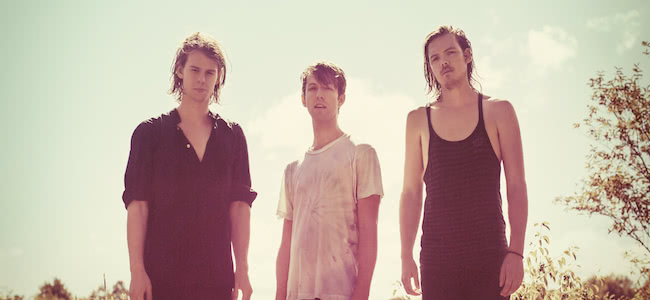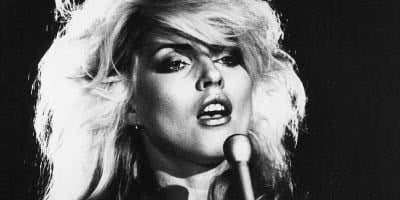Had the Mayans proved better clairvoyants, they may well have spotted a trio of twenty-something Canadians in their plastic crystal balls.
With their signatures still drying on a major label contract and a bandwagon nearing full occupancy in their homeland, Half Moon Run look set to have a far more tangible impact on 2013 than any ill-fated apocalypse.
While most bands with such promise can only produce enough steam for a debut album, Half Moon Run is set for the long haul.
“We just signed a deal with Glassnote (Phoenix, Two Door Cinema Club, Temper Trap) in New York,” explains the band’s vocalist/guitarist/keyboardist Conner Molander. “They’re releasing our debut album in Europe and the USA so we’ve got a lot of touring ahead.”
“It’s gonna be another big year,” he adds.
The album Molander speaks of is Dark Eyes. It’s a superb first-up effort that dreams in folky and electronic landscapes while being grounded by an instinctive pop touch.“We have good musical chemistry and we have similar types of musical standards but stylistically we’re very different.”
Its popularity was consolidated by launch single ‘Full Circle’, which to date has amassed 300,000 views on YouTube.
Despite the song’s reach, it is deeper within their debut LP where the breadth of the Canadians’ craft truly expands.
‘Drug You’ is the finest representation. It is dark, layered – though never for the sake of filling space – and rushes from the shadows via the cries of lead vocalist Devon Portielje. ‘Give Up’ abides by a similar principle while the likes of ‘Nerve’ and ‘Call Me In The Afternoon’ provide a lighter counterpoint.
Where the complex vibe originated is a point of mystery for the band, especially considering the diversity of all three members.
“We have good musical chemistry and we have similar types of musical standards but stylistically we’re very different,” says Molander.
“There were five us originally and we gradually got more serious until eventually we dropped everything to go for it.”
“Back when we started we weren’t trying to complete songs. We were just jamming, but even when we were jamming we were really into the sound,” he adds.
This ‘sound’ has brought Half Moon Run significant success in their native stead of Montreal. It also resulted in an extensive tour throughout Europe as well as support slots with Metric and Patrick Watson.
More recently it has seen them brush fretboards with music royalty, both by reputation and wardrobe malfunction.
The first was sharing a stage with Lou Reed at Radio City Hall Music in New York. The other was running into Sarah McLachlan while surfing in the manhood shrinking waters of Canada.
As if surfing at a beach where the sand has been consumed by snow isn’t odd enough, a chance encounter with one of the finest female vocalists of the past 20 years is straight-up bizarre.
“I was on the beach and the ‘booties’ (water shoes for a surfer) were tucked in the wrong way and Sarah McLachlan came down the beach and told me to fix it,” explains Molander.
“I was giving her a funny look ‘cause I recognised her and she was giving me a funny look and I thought; ‘no way, she recognises me?’ But she didn’t,” he explains. “She was just looking at my wetsuit and how it was improperly tucked in.”
“I was very embarrassed,” he adds with a warm Canadian chuckle.
The trio found a far warmer climate to frolic in when they rounded off 2012 with respective appearances at the Woodford and Peats Ridge festivals.
They’re now spending the reminder of January touring rural and metropolitan venues, including Melbourne’s Ding Dong Lounge and Sydney’s The Standard on Australia Day Eve.
Judging from their recorded material, it would appear a tricky task bringing such a layered and interlocking rhythm to a live stage. To conquer this, the band has called upon an extra member to assist with various parts.
“We added another musician to our live show to help us out because obviously there are only six hands in the band and it’s hard to replicate everything,” explains Molander. “Thankfully, we’ve got everything worked out so we can play the entire album.”“We’re excited because we now have resources and contacts that we didn’t have before.”
The musician says that they will also forgo the temptation to use any backing tracks. It’s a move that is likely to win them brownie points with the majority of the Australian gig-going public.
As he explains – and as many a punter would agree – there is nothing much more ‘vibe killing’ than seeing an Apple Mac sizing itself up against a keyboard or bass drum.
While Half Moon Run may occupy ‘indie’ territory, they posses far more ability than such a label suggests. While there is a sense of accessibility within their sound, there is also a depth and meticulousness that garners long term appreciation and repeated listening.
If the same record company that looks after Phoenix and Two Door Cinema Club recognise this, it’s only a matter of time before the rest of the world catches on too.
“One of the reasons why we chose Glassnote is because they give us a lot of freedom,” says Molander. “We’re excited because we now have resources and contacts that we didn’t have before.”
Above all else, 2013 is destined to be the year where Half Moon Run consolidate their credentials.
As for those naysayer predictors down at Mayan HQ, well, guess again you crazy bastards.
Half Moon Run are currently on tour with dates around the country. Full dates and details here.



































